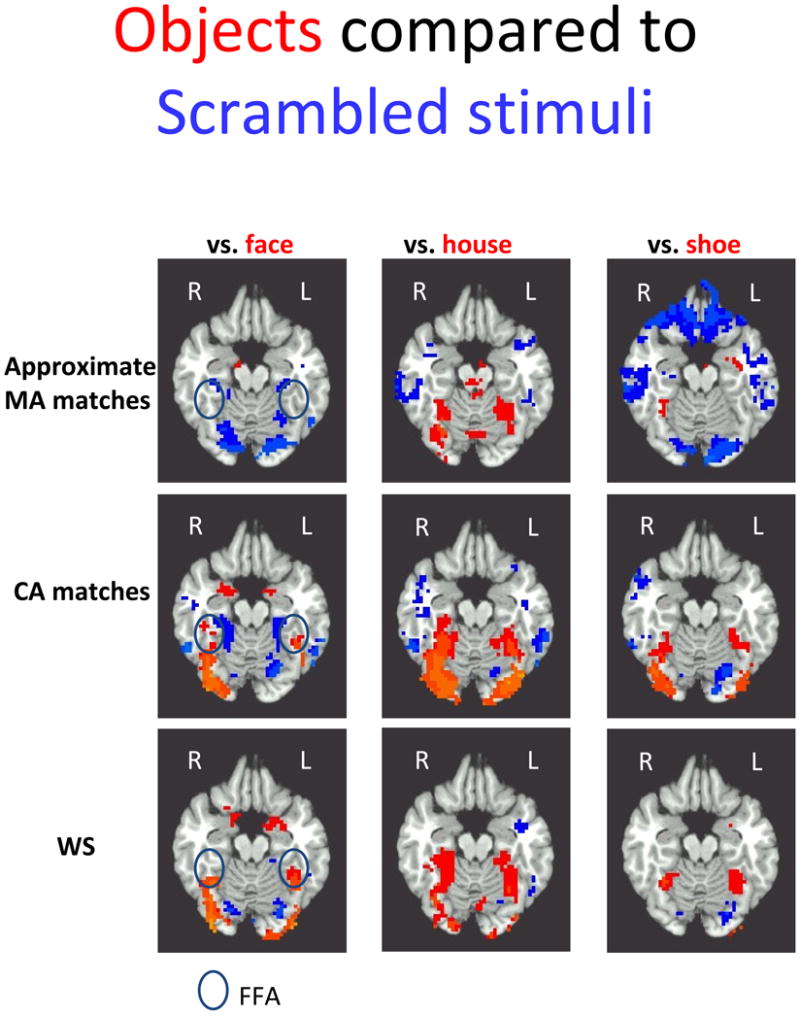Figure 3.

The contrast maps between three distinct classes of objects– faces, houses and shoes – (in blue) and the scrambled stimuli (in red, p< .05, corrected) is shown for each group at z = −16, with approximate MA matches in row 1, CA matches in row 2, and the WS group in row 3 (See also Table 2). Developmental change is evident from row 1 approximate MA matches to row 2 CA matches: approximate MA matches have substantially less activation to objects – regardless of class– and more to the scrambled stimuli than CA matches (reported in Table 3). The WS group in row 3 appears similar in object specificity to CA matches, with little activation for scrambled stimuli; however, they have relatively less activation to houses and shoes, and more activation to faces. Approximate FFA region enclosed in black oval.
